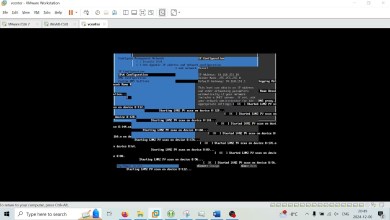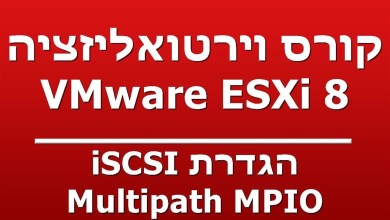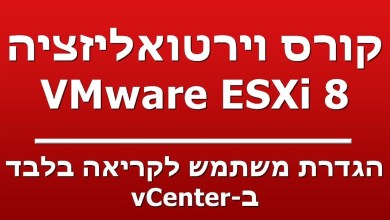CLASS11: VCENTER FEATURES- TEMPATES, MIGRATION
VMware templates are pre-configured virtual machine (VM) images used as a foundation for deploying new VMs. These templates are essentially master copies of VMs that are prepared and configured with specific operating systems, applications, settings, and other configurations. They serve as a starting point for creating multiple identical VM instances efficiently.
VMware templates significantly streamline the process of deploying new VMs, promote consistency across the environment, and reduce the time and effort required for provisioning new virtual machines in a data center or cloud environment.
Creation: Administrators create templates by configuring a VM with the desired operating system, applications, drivers, settings, and other configurations. Once the VM is configured as required, it’s converted into a template.
Template Characteristics:
Pre-configured Settings: Templates include pre-installed software, OS configurations, patches, and settings tailored to specific requirements.
Generalization: Templates are usually “generalized,” meaning they don’t contain specific identifiers like unique IP addresses or machine names, allowing for customization during deployment.
Storage Optimization: Templates often take up less storage space compared to full VMs as they do not store unique data or configurations.
Usage:
Efficient Deployment: Templates expedite the deployment of new VMs by providing a standardized, pre-configured starting point. Instead of configuring each new VM manually, administrators can deploy multiple VMs from a single template.
Consistency: Using templates ensures consistency across multiple VM instances, reducing errors and streamlining management.
Customization:
Customization Specifications: VMware allows customization specifications to be applied during deployment, enabling unique settings like network configurations, security identifiers, and other details.
Updating Templates:
Maintenance: Templates require periodic updates to include the latest patches, security updates, or changes to configurations. Administrators update the template, ensuring that future VMs created from it include the latest changes.
Deployment Process:
Cloning or Deploying: When creating a new VM, administrators typically clone or deploy from the template. This process generates a new VM instance based on the template, and any specified customizations are applied during deployment.
VM Migration:-
VMware provides various methods for migrating virtual machines (VMs) between different hosts, clusters, or data centers. These migrations are crucial for workload optimization, resource balancing, hardware maintenance, disaster recovery, and overall infrastructure management. Here are some key methods for VMware VM migration:
vMotion:
Live Migration: vMotion enables live migration of running VMs from one physical server (host) to another within the same vSphere environment, without any noticeable downtime.
Use Cases: It’s used for workload balancing, hardware maintenance, or upgrading physical hosts without disrupting VM operations.
Prerequisites: Shared storage (such as vSAN, NFS, or SAN) between the source and destination hosts is required.
Storage vMotion:
Storage Migration: Storage vMotion facilitates moving the VM’s storage files (VMDKs) from one datastore to another while the VM is powered on and running.
Use Cases: It’s used for storage load balancing, migrating VMs to higher-performing storage, or freeing up space on a datastore.
Prerequisites: The VM needs to be powered on and have no active snapshots.
Cross vCenter vMotion:
Migration Across vCenter Servers: This method allows migration of VMs between different vCenter Server instances, enabling mobility across separate vSphere environments.
Use Cases: Useful for data center migrations, consolidating multiple vSphere environments, or moving workloads between different vCenter instances.
Prerequisites: Shared storage and network connectivity between the vCenter servers.
Cold Migration:
Offline Migration: Cold migration involves shutting down the VM, copying its files to a new location, and then powering it on at the new location.
Use Cases: Used when live migration (vMotion) or storage vMotion is not feasible or when planned downtime is acceptable.
Prerequisites: The VM needs to be powered off during the migration process.
vSphere Replication:
Replication for Disaster Recovery: vSphere Replication allows continuous or scheduled replication of VMs’ virtual disks to a remote site for disaster recovery purposes.
Use Cases: Ensures data protection and enables failover and failback in case of disaster scenarios.
Prerequisites: Replication appliances and network connectivity between the primary and recovery sites.
Each migration method has its advantages and considerations based on factors like downtime tolerance, resource availability, network capabilities, and infrastructure architecture.
[ad_2]
source



